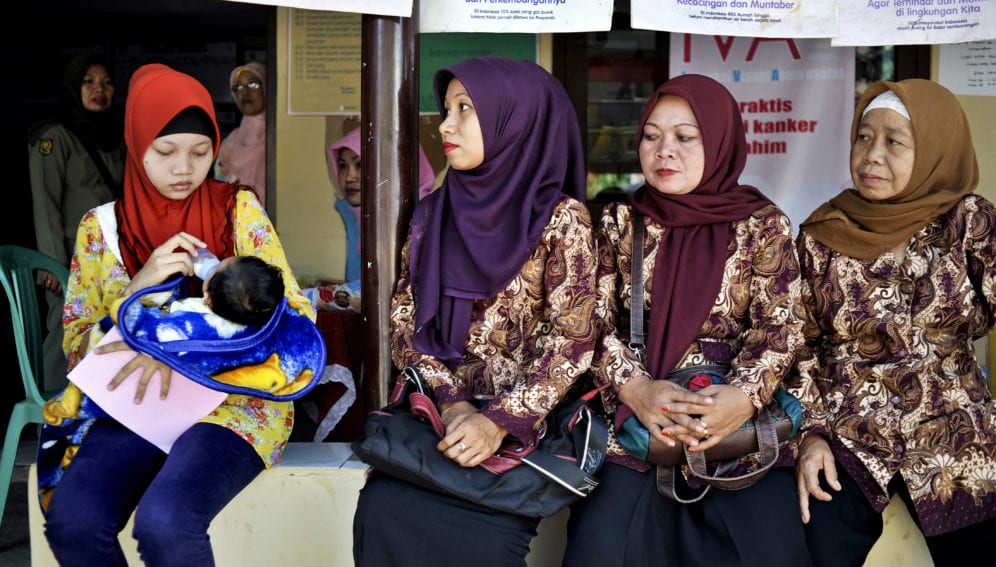Send to a friend
The details you provide on this page will not be used to send unsolicited email, and will not be sold to a 3rd party. See privacy policy.
[JAKARTA] Despite the provision of free cervical and breast cancer screening services provided by the Indonesian government, the incidence of cancer among women continues to be high as very few avail of the services, says a new study.
“In the developed world, cancer cases are mostly discovered in the early stage,” says Sumadi Lukman Anwar, an oncologist from Indonesia’s Gadjah Mada University and lead author of the study. “In those places, screening for cervical cancer through pap smear as well as vaccination have cut the rate of cervical cancer incidence by 80 per cent.”
“Mostly they are afraid of the procedure and shy of showing their body to health practitioners. Perhaps it is because they have no knowledge about cancer.”
Yanti Susilawati, Pratama Clinic, Indonesia
According to Anwar, if cancer is detected in pre-cancer or early stage (I and II), surgery, chemotherapy and radiation may eliminate the cancer cells. But these therapies do not work well in advanced cases.
Indonesia’s health ministry has been promoting cancer screening for women since 2008 but participation was a low 1.75 per cent even by 2014. The following year, the ministry made screening free for Indonesian women aged 30 years old and above, but participation has remained insignificant at less than 5 per cent.
Anwar, together with collaborators in University College, London (UCL), King’s College London, and the University of Manchester, analysed questionnaires filled in by 5,397 women from all over Indonesia to find that only one in five women (20 per cent) was aware of the early cervical cancer screening programme. Even worse, only 5 per cent knew about mammography for early detection of breast cancer.
Jonathan Ledermann, professor of medical oncology, UCL Cancer Institute, says the level of awareness and participation were very low compared to Western Europe’s 70 per cent uptake of services.
A study published by The Lancet in November says that every year, 800,000 women around the world die because of cervical and breast cancer, with mortality determined by location. Two-thirds of breast cancer deaths and nine out of 10 cervical cancer deaths happen in the low- and middle-income countries.
“There’s a lot of work to be done, and a lot of investment required in education and facilities for screening if Indonesia is going to climb up the ladder of screening for these two cancers,” says Ledermann.
Anwar suggests that the government should be more active in engaging women to avail of early cancer screening. He also recommends better distribution of healthcare professionals in Indonesia.
“It would be better if the government gives an official letter of invitation to every woman in the 30 – 40 age group so that screening does not rely only on personal awareness,” he says.
Yanti Susilawati, health analyst at the Pratama Clinic, Deliserdang, North Sumatra, says current efforts by the government are not enough to ensure Indonesian women take cancer screening test. “I always have difficulty persuading women to take the tests. Mostly they are afraid of the procedure and shy of showing their body to health practitioners. Perhaps it is because they have no knowledge about cancer.”Susilawati thinks that higher education levels make for better participation. “About 40 – 50 women took the pap smear test in my clinic last month and most of them were working mothers with higher education and comparatively good incomes.”
This piece was produced by SciDev.Net’s Asia & Pacific desk.














